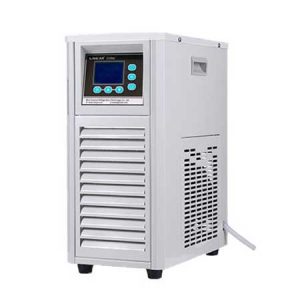heat recovery air cooled chiller
Introduction to Heat Recovery Air Cooled Chillers
Heat recovery air cooled chillers are innovative HVAC systems that not only cool spaces but also recover waste heat, providing hot water for various applications. This dual functionality makes them highly efficient and environmentally friendly, contributing to sustainable operations in industries such as food processing, pharmaceuticals, and chemical manufacturing.

Operational Mechanisms
The operational mechanism of heat recovery air cooled chillers involves a vapor compression cycle with an additional heat recovery component. During the cooling process, heat is absorbed from the space being cooled and transferred to the condenser. Instead of expelling this heat to the atmosphere, a heat recovery unit captures it, using it to produce hot water. This heat is then available for applications such as sanitation, heating, or preheating processes.
Energy Efficiency
Heat recovery chillers are known for their high energy efficiency. By reclaiming waste heat, they reduce the overall energy consumption of the system. Some heat recovery chillers claim to have an efficiency as low as 0.50 kW/ton or less, making them more efficient than standard centrifugal chillers. This efficiency is particularly beneficial in applications where both cooling and heating demands are high, as it reduces the need for separate heating systems.
Safety Features

Safety is a critical aspect of any industrial system, and heat recovery air cooled chillers are equipped with features to ensure operational safety. These include pressure relief valves, high-temperature cutoffs, and safety switches to prevent overheating and other potential hazards. Additionally, the systems are designed to minimize the risk of refrigerant leaks, which is crucial given the environmental impact of refrigerant emissions.
Practical Applications
Heat recovery air cooled chillers are used in a variety of industrial applications where both cooling and heating are required. They are particularly useful in facilities that have a significant demand for hot water, such as hotels, hospitals, and food processing plants. In these settings, the ability to recover heat from the cooling process and use it for heating purposes can lead to substantial energy savings.
Market Trends and Carbon Neutrality
The market for heat recovery chillers is growing due to increasing awareness of energy efficiency and environmental sustainability. These chillers are considered green technology in HVAC because they reduce energy consumption and carbon emissions. As industries strive for carbon neutrality, the adoption of heat recovery systems is expected to increase, driven by their ability to reduce waste and optimize energy use.
Digitalization and Optimization

Digitalization is playing a significant role in the optimization of heat recovery air cooled chillers. Data-driven performance monitoring and control systems can improve the efficiency of these chillers by adjusting operations in real-time based on cooling load forecasts and heat recovery potential. This leads to more precise temperature control and energy savings.
District Heating and Cooling Infrastructure
The integration of heat recovery air cooled chillers into district heating and cooling infrastructure is another growing trend. By connecting multiple buildings or facilities to a central heat recovery system, waste heat can be distributed more widely, providing heating to a larger area and further increasing the efficiency of the system.
Conclusion
Heat recovery air cooled chillers offer a dual solution for cooling and heating needs, making them an attractive option for energy-efficient and environmentally conscious operations. Their ability to recover waste heat and convert it into useful thermal energy reduces energy consumption and carbon emissions, aligning with the goals of carbon neutrality. As technology advances and digitalization enhances system optimization, the role of heat recovery air cooled chillers in sustainable industrial processes is set to expand.
Related recommendations
chill chiller
639Understanding Chillers: Definition and Basics A chiller, often referred to as a "chill chiller" in colloquial terms, is a cooling device that operates on the principle of vapor-compression or a...
View detailsthermic fluid heating system
460Introduction to Thermic Fluid Heating Systems Thermic fluid heating systems are integral to various industrial processes that require controlled and efficient heat transfer. These systems utili...
View detailsHow to solve the problem of out of control throttle valve in the circulating chiller?
987How to solve the problem of out of control throttle valve in the circulating chiller? 1、 How to determine if the throttle valve is out of control Excessive or insufficient flow ...
View detailstemperature cooling system
230Temperature cooling systems are essential in numerous settings, from homes and offices to large - scale industrial facilities. These systems are engineered to regulate temperature, ensuring comfor...
View details
 LNEYA Chiller
LNEYA Chiller





HelloPlease log in